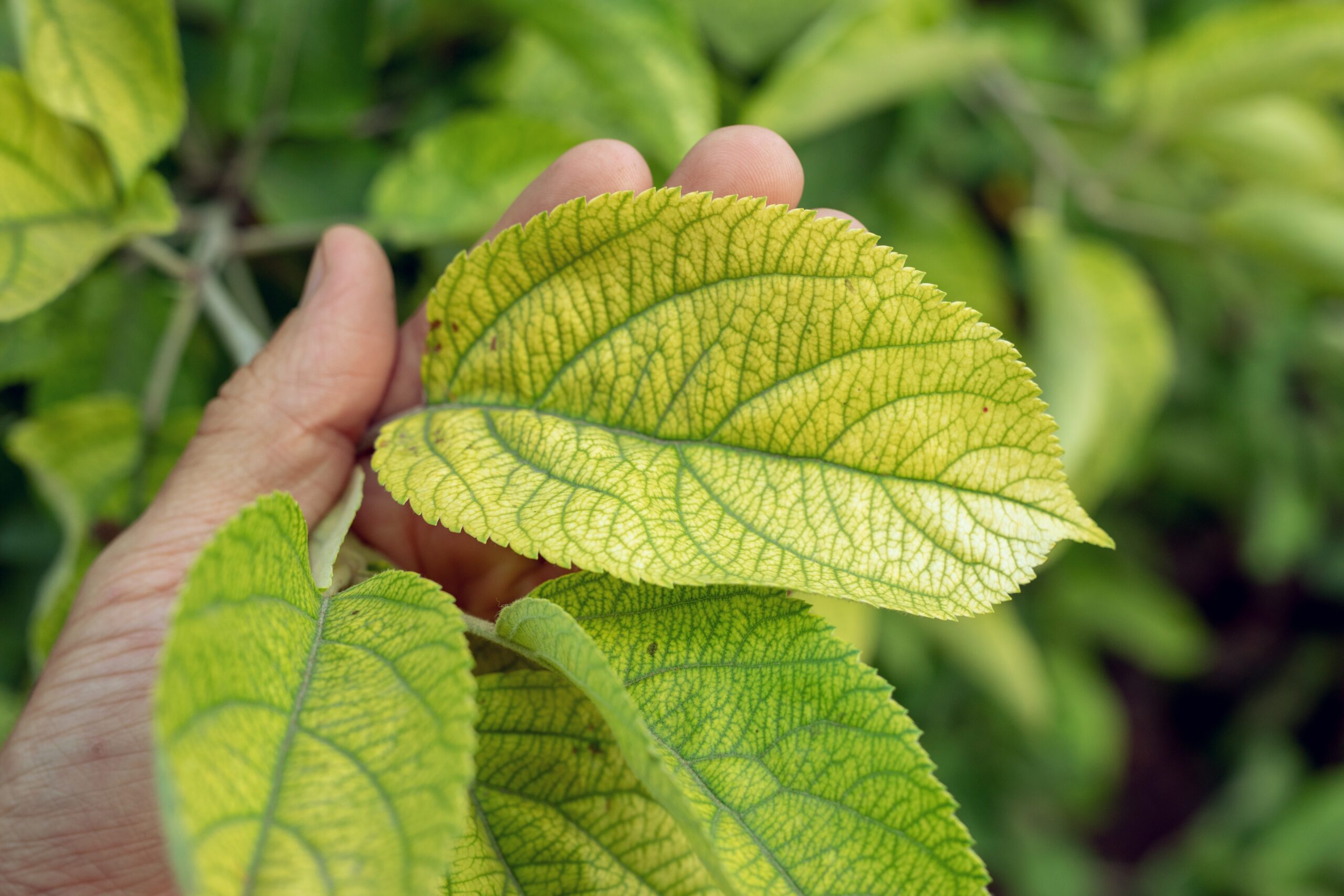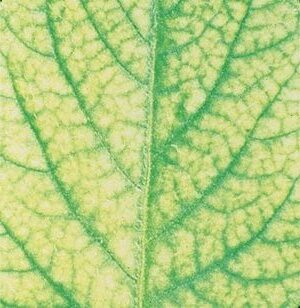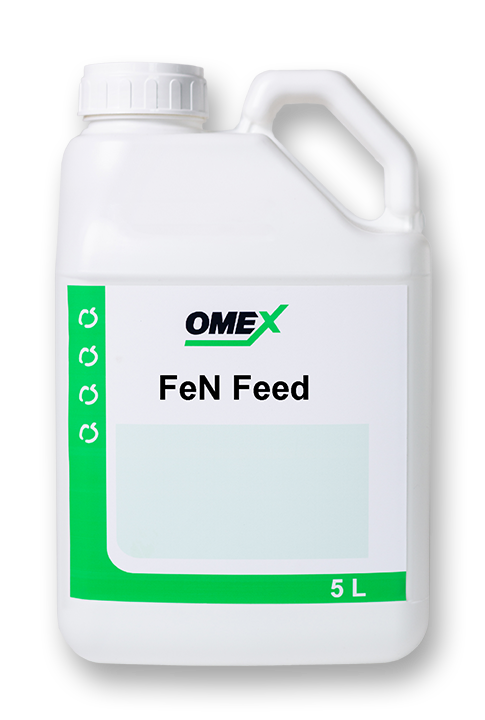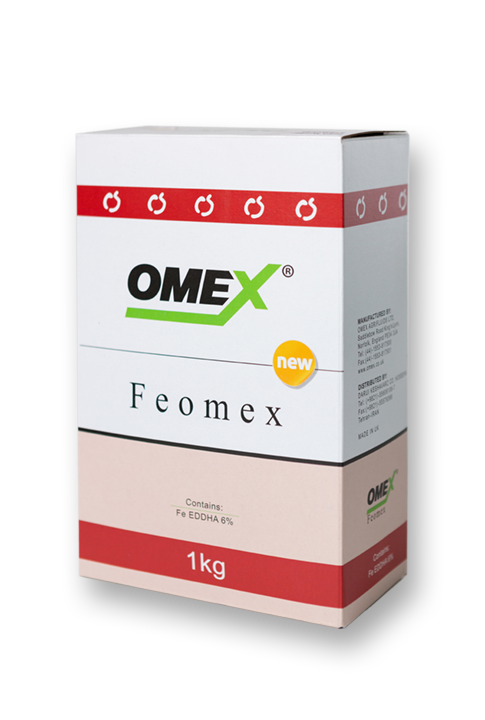Iron nutrient deficiency in plants
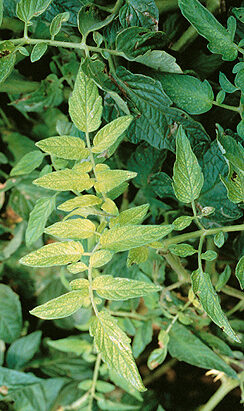
Iron deficiency in tomato- interveinal chlorosis of young leaves. Source: APS Digital Image Collections.
Form
Taken up as ionic Fe2+ and Fe3+, Iron is central to photosynthesis and the primary Carbon capture pathway.
Function
As part of both cytochrome and chlorophyll, Iron promotes green leaf area, cell activity and photosynthetic rate. This has a direct impact of growth rate and the movement of soluble sugars around the plant. In addition, Iron plays a vital role in plant defence and enzyme activation. Iron-rich materials are released through the root system to stimulate beneficial plant microbes and reduce pathogen activity. As a result, low iron status results in reduced tolerance to stress and infection.
Symptoms
Iron nutrient deficiency affects younger leaves and active growing points. Similar in appearance to Magnesium stress, but affecting new leaves. Tissue becomes severely chlorotic, displaying a uniform inter-veinal yellowing.
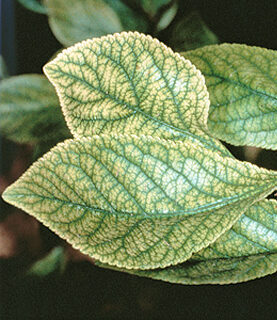
Iron deficiency expressed as loss of chlorophyll in the interveinal areas leaving a network of small green veins. Source: APS Digital Image Collections.
Significance
Iron stress restricts the conversion of sunlight to plant energy, resulting in slow growth rates, poor development and low tolerance to both biotic and abiotic stress. Iron nutrient deficiency is often associated with alkaline soils and cold, wet growing conditions.
Actions
Check soil status and root development for compaction. Apply foliar treatments during the early stages of plant development and times of stress.
If you require any further information about deficiency problems or any of our products please get in touch ????


